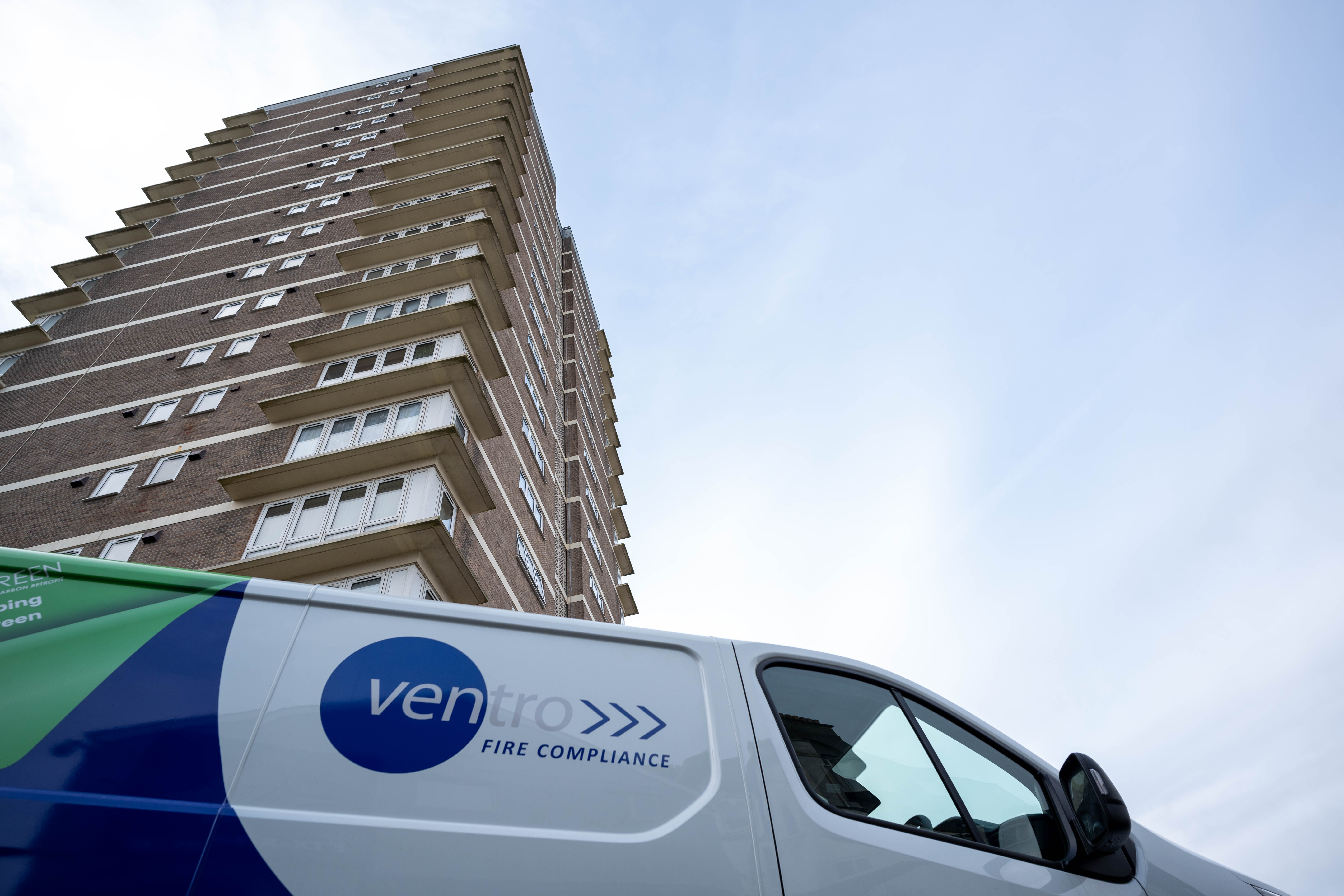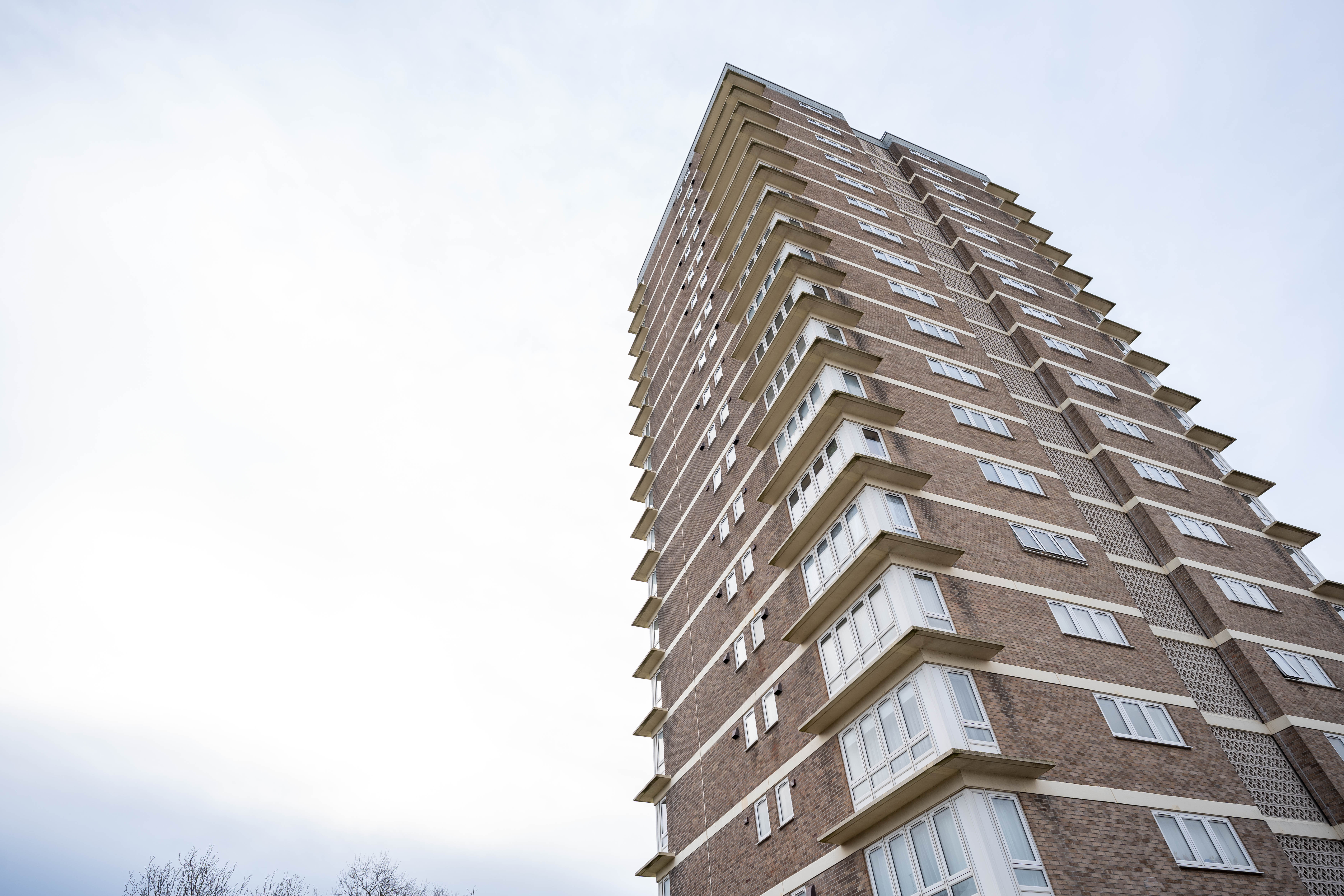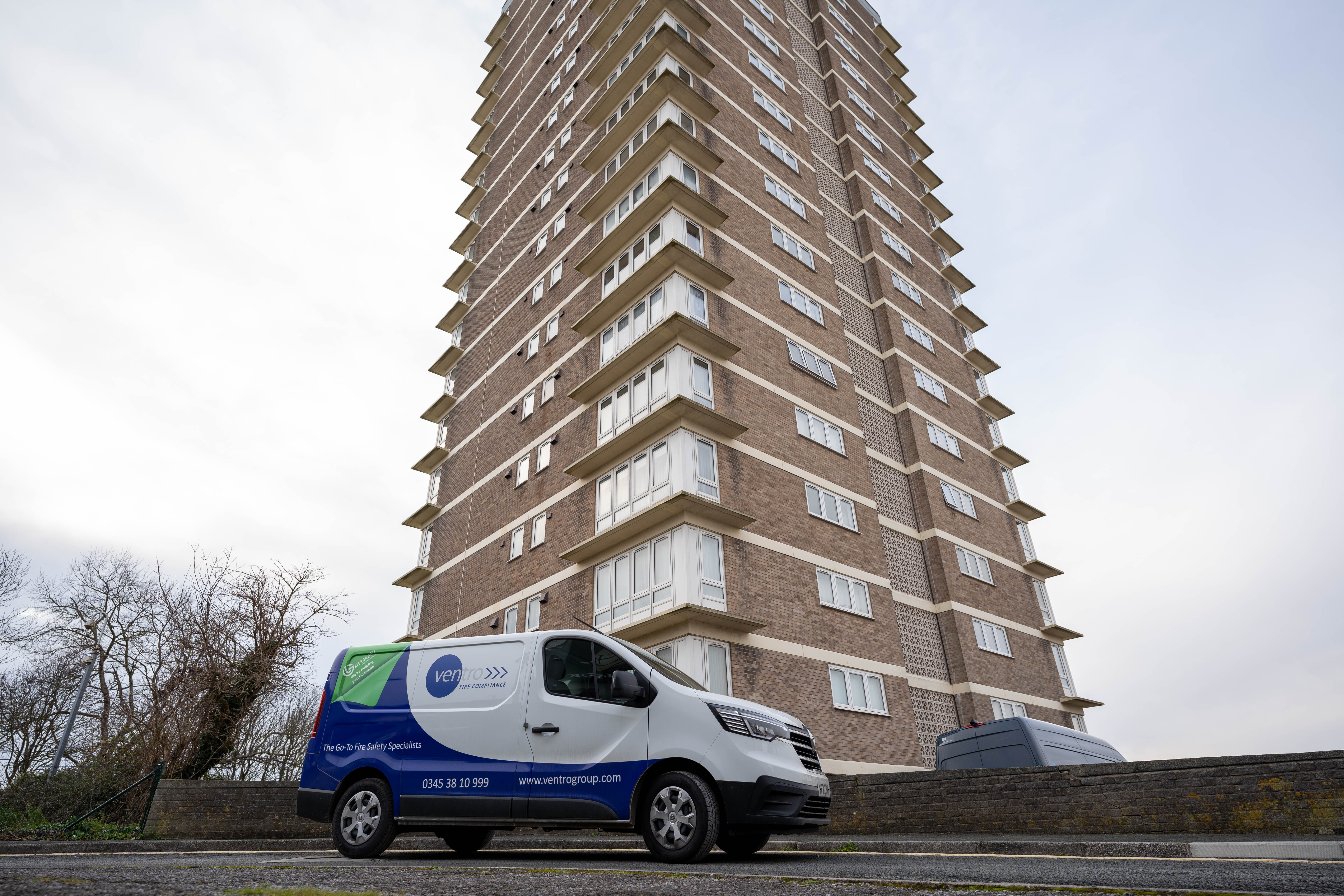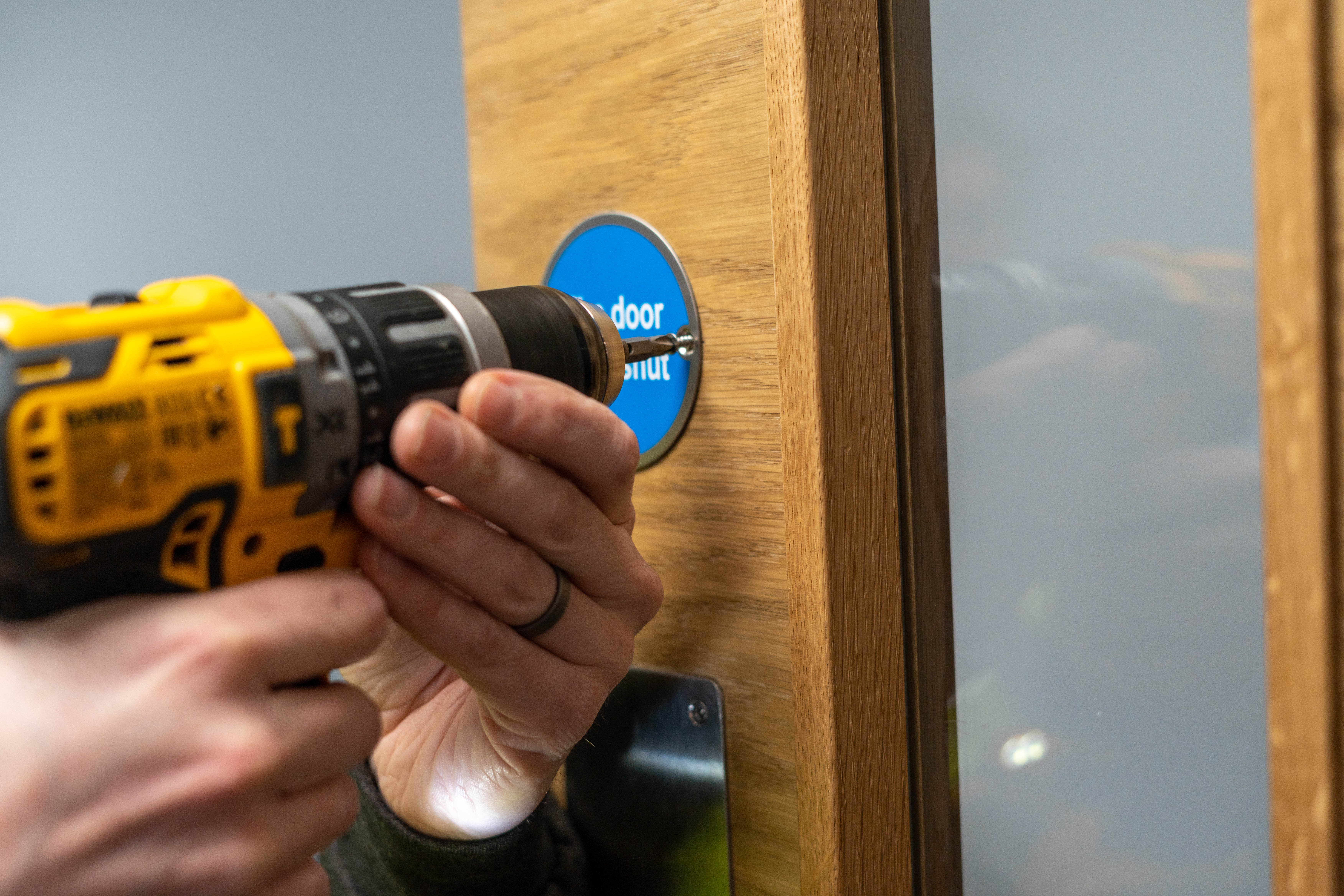Legislation Webinar 2025 - Q&A with Steven Wilson, Ventro

For our first webinar of 2025, we were pleased to welcome Steven Wilson, Technical Director at Ventro, to break down some of the most significant updates in fire safety standards and regulations.
Steven’s presentation explored key topics, including why BS 9991 is being updated, the differences between British Standards and Approved Document B, and the specific changes coming to BS 9991. While we covered many important points during the live session, there wasn’t enough time to address every question in detail.
To ensure you have the insights you need, we’ve compiled Steven’s responses to the most pressing questions from the event. Read on to stay informed about these crucial fire safety updates.
Kicking off our first webinar of 2025, Ventro was delighted to welcome Paul Saunders from the Fire Protection Association (FPA) to provide expert insights into the evolving fire safety landscape.
 Steven Wilson
Steven Wilson
Technical & Delivery Director
With five years of dedicated experience in fire safety, Steven Wilson is the Technical Director at Ventro Group. A true industry expert, Steven specialises in fire safety legislation, offering a profound understanding of regulatory frameworks. His adeptness in crafting bespoke fire safety solutions tailored to diverse environments underscores Ventro's commitment to excellence and finding the correct solution.
Steven's comprehensive knowledge extends to the latest fire safety products, ensuring Ventro remains at the forefront of technological advancements. Recognised for his leadership, Steven frequently speaks at conferences, sharing insights that reflect his passion for fostering fire safety awareness. His wide expertise reinforces Ventro Group's position as a trusted and innovative leader in Fire Safety.
Q1: Why Sprinklers and not suppression?
Sprinklers are an active fire protection system designed to suppress fires at an early stage by releasing water directly onto the affected area.
Fire suppression systems, on the other hand, may use alternative agents such as gas, foam, or mist to suppress fires. While misting systems have potential, they are not as widely referenced in regulations due to not enough test evidence—not that they’re not good enough, but simply because there isn’t enough test evidence for them. The preference for sprinklers in many buildings, particularly residential and commercial properties, is based on their proven reliability, effectiveness, and compliance with UK fire safety regulations such as Approved Document B (ADB) of the Building Regulations 2010.
Sprinklers are also mandated in certain buildings under the Fire Safety Act 2021 and the updated BS 9251:2021 for residential sprinkler systems.
Q2: In this update, has there been any consideration for EV battery fires, such as those in mobility scooters?
No, but the technology has advanced to the point where Ventro is now an approved installer of a fully certified, non-aerosol suppression system capable of extinguishing EV fires. This is excellent news for server rooms and mobility scooter storage.
Q3: Could you explain what the change in relation to the removal of national classes for fire resistance is? That is coming on 2 September 2029.
The removal of national classes for fire resistance, effective from 2 September 2029, is a shift towards harmonising UK fire safety standards with European classifications under BS EN 13501-2. This means that the previous classifications under BS 476 will no longer be accepted, ensuring that all fire resistance ratings align with European testing and certification. This change affects construction materials, fire doors, and structural elements, requiring compliance with the Euroclass system.
Q4: If a fire escape route has been blocked [without approval from building control?], who is responsible for enforcing the reinstatement?
If a fire escape route is blocked without approval, the responsible party is the building owner, the responsible person under the Fire Safety Order 2005 (as amended by the Fire Safety Act 2021), or the duty holder under the Building Regulations 2010. The enforcement authority is typically the local fire and rescue service or the local authority’s building control. They have the power to issue enforcement notices under Article 30 of the Regulatory Reform (Fire Safety) Order 2005, requiring reinstatement of the fire escape route.
Q5: My understanding (as a planning officer) is that purpose-built student accommodation has to comply with commercial fire safety requirements rather than conventional residential, resulting in proposals coming forward with multiple studios with kitchenettes at the point of entry which would not be acceptable for conventional residential accommodation. Is this correct, and if so, is this likely to change?
Yes, purpose-built student accommodation (PBSA) is generally considered a commercial property for fire safety compliance and should adhere to BS 9991:2021 and Approved Document B. This classification is due to the transient nature of occupants and shared facilities. While changes in legislation could occur, the current framework ensures PBSA is treated differently from conventional residential housing due to higher occupancy risks and differing layouts.

Q6: I assume that Student Accommodation is not included in BS9991 as well, is that correct?
No, BS 9991:2021 includes provisions for student accommodation, particularly in relation to fire safety design and management. The standard provides guidance on compartmentation, means of escape, and fire suppression systems tailored for PBSA.
Q7: If a building is already under construction, does the BS991 need to be implemented retrospectively?
No, BS 9991 is not applied retrospectively unless specifically required by building control or the fire authority. If a project was approved under a previous standard, it can generally continue under those regulations, unless Gateway 2 (for higher-risk buildings) was not passed before regulatory changes took effect.
Q8: Will this cover buildings such as children's homes, respite centres, etc.?
Yes, children's homes and respite centres fall under the scope of BS 9991, as they are classified as residential buildings requiring specific fire safety measures. Additional regulations may apply under the Care Quality Commission (CQC) and local authority fire safety policies.
Q9: With regards to misting systems is that just within section 10 or throughout the document?
In the 2024 revision of BS 9991, published on November 27, 2024, explicit references to water mist systems have been removed from the entire document, not just Section 10. The standard now exclusively refers to sprinkler systems when discussing fixed firefighting systems. This change reflects the current emphasis on sprinklers due to their extensive testing and proven effectiveness. However, this omission does not imply that water mist systems are prohibited; their use can still be justified by adhering to the guidance provided in BS 5306-0:2020, which accepts water mist systems in all domestic settings, provided they fully comply with BS 8458.
Q10: With the updates of BS9991, how does this impact Schools? As I know that Care homes are quite similar to Schools.
Schools primarily fall under BS 9999 rather than BS 9991. However, fire safety in schools must comply with ADB and BB 100: Design for Fire Safety in Schools. Care homes, in contrast, have specific guidance under BS 9991 due to the vulnerability of residents.
Q11: The mandatory Installation of sprinkler systems in buildings over 11 metres, is this for new buildings or existing buildings are required as well?
The requirement under Approved Document B (May 2020 update) applies primarily to new residential buildings over 11m. Retrofitting may be required if a significant refurbishment or material change of use occurs.
Q12: Will sprinkler systems need to be installed in already built buildings above 11m?

Q13: Is this section only relevant to residential buildings or commercial too?
The 11m sprinkler rule applies to residential buildings, Commercial properties have separate requirements under BS 9999.
Q14: Are the updates likely to have impacts on the use of modular construction techniques and use of CLT?
Yes, stricter fire safety requirements under Regulation 7(2) limit the use of combustible materials such as CLT in external walls of buildings over 18m.
Q15: We have 4 storey student accommodation blocks with two cluster flats on each floor and single stairs all below 11m, stairs have full lobby approach are you saying BS9991 is suggesting the buildings will need additional measure retro fitted.
No, see earlier responses. BS 9991 should only apply to new buildings unless significant changes to the building are made.
Q16: Steve will evacuation lifts have to be manned by trained attendants to assist in any evacuation as is current regs.
Yes, evacuation lifts must be managed by trained personnel in line with BS 9999 and BS 8899.
Q17: Regulation 7 (2) prohibits this type of construction over 18m or 7 storeys.
Correct, Regulation 7(2) bans combustible materials in external walls of relevant buildings over 18m.
Q18: How does mass timber building stand up against classification standards? Does this mean that Class C materials could be more readily used in the UK?
Mass timber must comply with BS EN 13501-1 and BS EN 1365 for fire resistance.
Q19: You mentioned that misting systems and other fire suppression systems are no longer referred to in the revised BS9991 guidance, and it now only refers to sprinkler systems, but that it doesn't mean that misting systems are no longer useable. Have you had experience under the new guidance of justifying the use of misting systems in residential settings and what would be the route of achieving this?
- Consult BS 5306-0:2020: BS 9991:2024 defers to BS 5306-0 for guidance on fixed firefighting systems. According to Table 1 of BS 5306-0, water mist systems are acceptable in all domestic settings, provided they fully comply with BS 8458.
- Ensure Compliance with BS 8458: This standard specifies the performance and installation requirements for residential and domestic water mist systems. Compliance ensures the system's suitability for its intended application.
- Alternative Justification via BS 7974: For unique property layouts or circumstances where traditional prescriptive guidance may not be suitable, a performance-based approach can be employed using BS 7974:2019. This method allows for custom fire strategies that utilize probabilistic and computational methods to demonstrate system performance.
By following this route, water mist systems can be effectively justified and implemented in residential settings under the revised BS 9991:2024 guidance.

Q20: Steven, do FSER 2022 regs apply to care homes and supported housing with reference to information to residents on fire doors etc. under Reg 9.
Yes, FSER 2022 applies under Regulation 9.
Q21: Buildings submitted under gateway 2 prior to this issue are they under the old regulation of new 9991.
They follow previous regulations unless specifically required to comply with BS 9991.
Q22: Kitchen Worktops to be heat resident: does this apply to both communal and residents' homes?
Yes, it applies to all residential kitchens under BS 6222.
Q23: How does 9991 use of timber align with Reg 7 and external walls (which isn't guidance)
Timber use is limited under Reg 7, with specific guidance for internal use.
Q24: Would you consider the BS 9991 a "residential" standard compared to approved document B? Or does it have its use for industry/production/large scale buildings as well?
The full name of BS 9991 is Fire safety in the design, management and use of residential buildings. There are some building types such as care homes, student accommodation etc., which are commercial businesses but operate within residential buildings.
Q25: It was mentioned that fire doors will have e1 rating so this would remove FD ratings in residential buildings?
E ratings will be the standard once introduced.
Q26: Is the proposed relaxation for the use of mass timber in HRB's not conflicting with the legal requirements of Regulation 7(2) restricting the use of combustible materials in external walls introduced post Grenfell?
Yes, the relaxation appears to contradict Regulation 7(2), but further regulatory guidance may clarify specific exemptions or additional fire protection measures required.
Q27: When an apartment door is demised to leaseholder, and they do not have their fire door checked and a managing agent are unable to use funds from the service charge how can this be enforced?
Managing agents can seek enforcement through fire safety orders, lease agreements, and legal channels. The Fire Safety Act 2021 empowers fire authorities to require fire door checks and issue compliance notices.
_____________
We’d like to extend our sincere thanks to each of our key speakers for their insights during the webinar, and a special thank you to Steven for taking the time to respond to all the unanswered questions.
Be sure to sign up for updates on our upcoming webinars here, and if you have any questions about the topics covered in this Q&A, feel free to reach out below. One of our fire safety consultants will be happy to assist you.
Sign up for fire safety updates
You'll receive all the latest news and blogs straight to your inbox.





